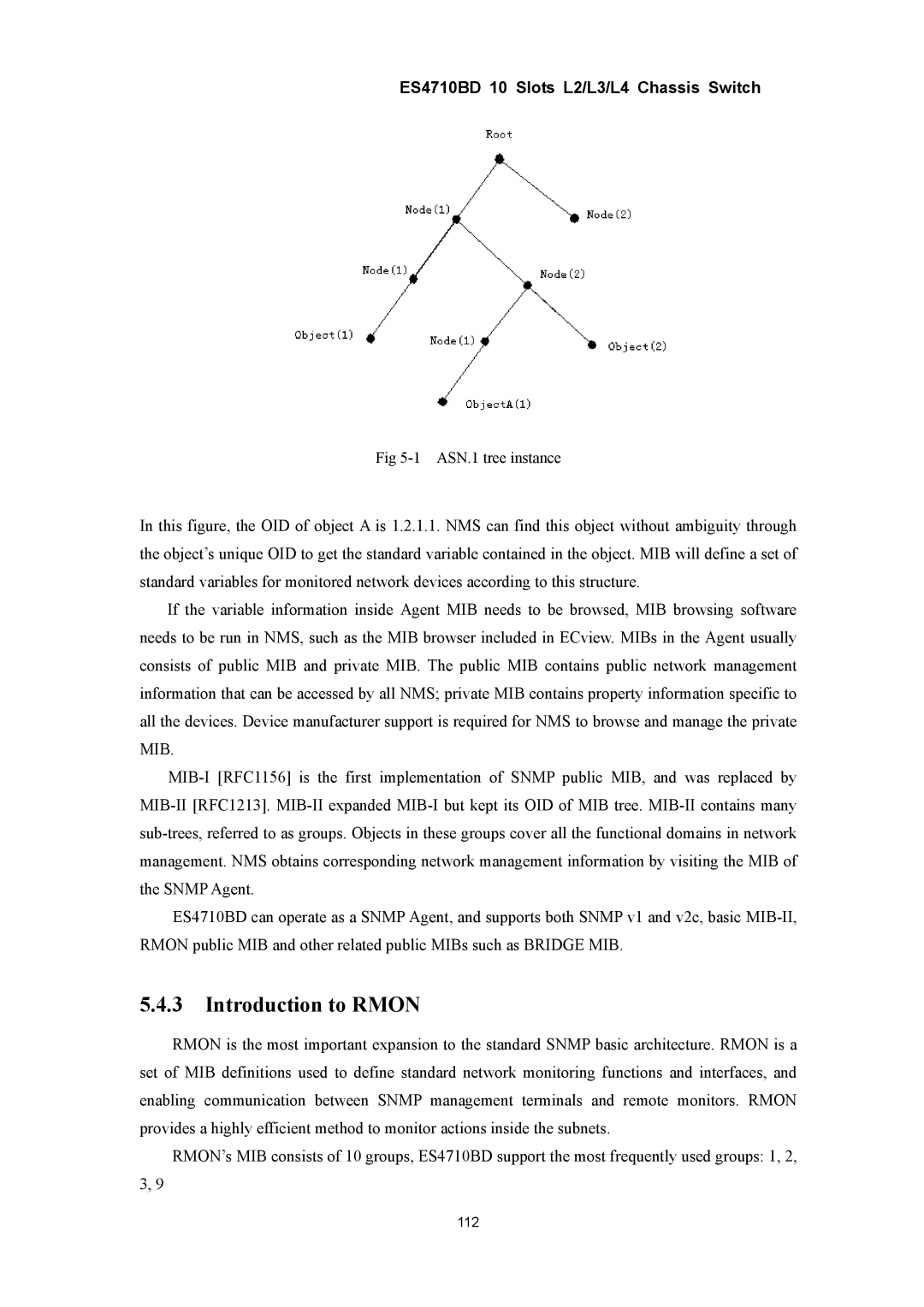
ES4710BD 10 Slots L2/L3/L4 Chassis Switch
Fig
In this figure, the OID of object A is 1.2.1.1. NMS can find this object without ambiguity through the object’s unique OID to get the standard variable contained in the object. MIB will define a set of standard variables for monitored network devices according to this structure.
If the variable information inside Agent MIB needs to be browsed, MIB browsing software needs to be run in NMS, such as the MIB browser included in ECview. MIBs in the Agent usually consists of public MIB and private MIB. The public MIB contains public network management information that can be accessed by all NMS; private MIB contains property information specific to all the devices. Device manufacturer support is required for NMS to browse and manage the private MIB.
ES4710BD can operate as a SNMP Agent, and supports both SNMP v1 and v2c, basic
5.4.3Introduction to RMON
RMON is the most important expansion to the standard SNMP basic architecture. RMON is a set of MIB definitions used to define standard network monitoring functions and interfaces, and enabling communication between SNMP management terminals and remote monitors. RMON provides a highly efficient method to monitor actions inside the subnets.
RMON’s MIB consists of 10 groups, ES4710BD support the most frequently used groups: 1, 2,
3, 9
112
